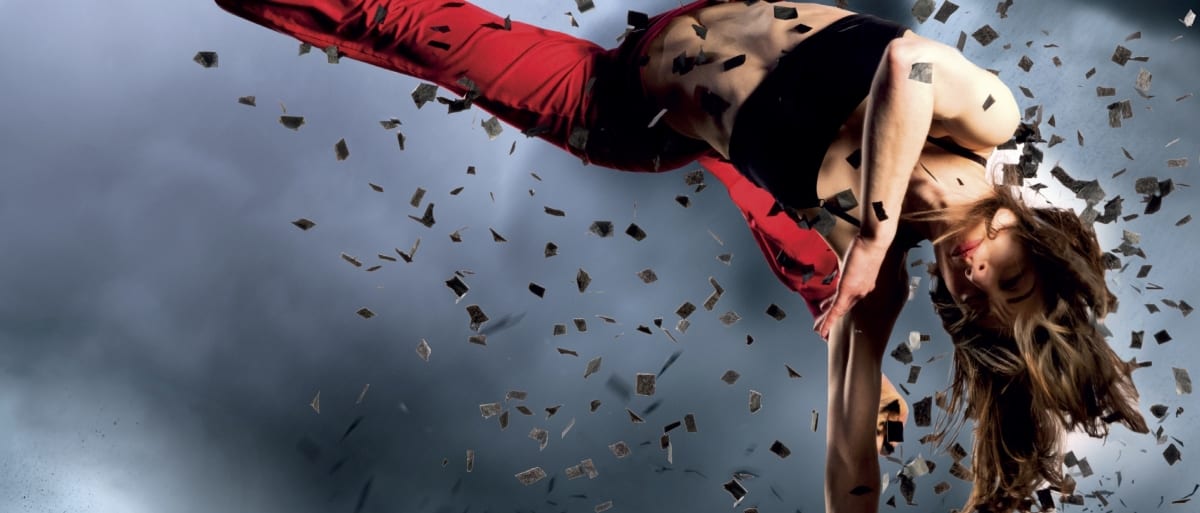It’s a tough old gig being in the contemporary dance business. For audiences though, it’s a golden age. The genre is being pushed to its limits with the most beautiful, innovative, and topical dance works presented to audiences on a regular basis. Everyone, it seems, is doing ground breaking work. The young ones in Rambert2 bring the most thoughtful and challenging exploration of the human condition – innovative and beautiful, more than equal to the incredible work of its elder sibling, Rambert.
Even the circus crowd are getting in on the act, and not just the big circuses, but smaller outfits, such as Circa. Circa’s acrobats, with their complete disregard for gravity, are bringing the most thoughtful and challenging explorations of the human condition to stages across the world, on a regular basis. Even the use of a consulting scientist is now de rigueur, one recent and notable example is Alexander Whitley’s beautiful contemporary dance piece about the sun, 8 Minutes, informed by planetary scientist Dr Hugh Mortimer.
Against this incredibly competitive background, James Wilton’s The Storm just doesn’t come anywhere near the standard of relentless excellence that other contemporary dance troupes are reaching as the norm. The Storm is an exploration of mental health and depression through dance, using the metaphor of the storm, and has Dr David Belin as its “scientific advisor”.
The tradition of using a storm, or tempest, as a metaphor for human struggle, is a long and honourable one. James Wilton’s interpretation of this tradition, it seems, is this. People have trouble with their mental health. It’s really awful. Other people who aren’t having trouble, will often try and help those who are. Sometimes the strain of helping can lead to mental health problems for those who previously didn’t have them. It all seems to be OK once the mental health problems are somehow solved.
Soloist, Sara Jane Taylor, showed her struggle with mental health, primarily by standing front/middle of the stage shaking her right hand and through a yoga style, itchy back, movement. Soloist Norikazu Aoki’s main method of showing his mental health problems was really, really wanting to get at something at the front and centre of the stage. James Wilton played the one who generally didn’t have mental health problems. For the most part, he stood next to the dancer having the issue and either patted them on the back, suggested deep breathing in through the nose and out through the mouth (I’m not joking), tried to stop them doing whatever it was they were doing – in her case, the hand shaking, in his case, trying to get whatever it was at the front of the stage. All this he did with exaggerated sad face, looking down, big sighs and head shaking.
Occasionally, the pressure of being the supportive one would get too much for James Wilton and he would do the standard “I’m having a mental health issue” dance – some swirly writhing. At one point, soloist Norikazu Aoki, looked like he may have committed suicide – shown by lying down and not moving. James Wilton walked along, looked upset and then did some type of Irish jig/hop scotch over the body. After that, Norikazu came alive again.
If the tone of this review is uncharacteristically sarcastic, it is because I started getting angry.
Contemporary dance is the perfect medium for the exploration of the human condition in ways that are thoughtful, visceral and challenging. Yet, the superficial choreography of this performance trivialised this most pervasive and complex of issues in a way that I started to find very disrespectful.
Aside from one dancer, the technical standard of dancing in the troupe was just not up to scratch. None of the menu of around 10-12 dance movements that were repeated over and over and over again, were executed with that gravity defying suppleness and technical excellence that audiences have come to expect from contemporary dancers. The notable exception was soloist Norikazu Aoki, who is clearly a talented and beautiful dancer who executed even the most mundane choreography with grace. Unfortunately, Aoki’s exceptional talent merely served to highlight the technical deficiencies in the other dancers.
The music, an electro prog rock piece composed by Amarok/Michal Wojtas was beautiful and enhanced the theme well.
Contrary to popular belief, critics hate giving bad reviews because we know how much work goes into each and every show. But in this case, I cannot in good conscience recommend that you spend your hard-earned money on tickets.
Misleading Press Photographs
I would like to take issue here with the press photographs for this show. As consumers, we understand that a company must produce the best image that depicts the show in the best possible light, with a bit of dramatic licence thrown in. However, the flyer (and the featured photo above) shows a dancer, in a dramatic red and black costume, in a very dramatic pose, with a wet look floor and the image of a storm projected behind the dancer. It is a strong and beautiful photograph and made me very excited to see the show. I would buy a ticket on the strength of that image. The show I saw had almost nothing to do with the image shown in the press photograph. The costumes and colour scheme were utterly different, there was no wet look floor, no projected images and even the dance pose in the photograph was not representative of the choreography as a whole.

